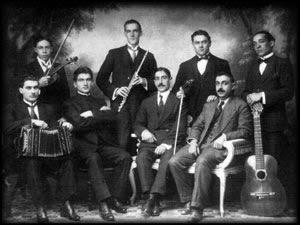
Great version of this tango by Osvaldo Pugliese with Roberto Chanel. The title is "The men are forming the circle (la ronda)." La ronda refers to the dance floor or line of dance.
The original title was "Muchachos se armó la milonga," which uses lunfardo (street slang of Buenos Aires), but the title was changed along with many other tangos in 1943, because of "le ley seca (the dry law)" a policy by the ruling military and the Catholic church to "purify" the language of Argentina. They also wanted to protect the youth from the corrupting influence of tango.
Other examples of famous tangos with name changes are:
| Old Title | Revised Title |
| Muchachos se armó la milonga | Muchachos Comienza La Ronda |
| Shusheta | El Aristocrata |
| Chique | El Elegante |
| La Maleva | La Mala |
| Milonguero Viejo | Balarín Antiguo |
| Concha Sucia | Cara Sucia |
| La concha de la lora | La cara de la luna |
| El Once | A Divertirse |
| Raza Criolla | El Taita |
| Mí Pebeta | Mé Nena |
| Con Los Amigos | A Mí Madre |
| Rique | Olvídame |
| Rosa Morena | Abuelita Dominga |
| Marquita | Marcheta |
| Condena | S.O.S. |
| Metido | Enamorado |
| Comparsa Criolla* | Comme il faut |
| El Morocho y El Oriental** |
Gardel-Razzano |
|
* This tango was composed by Rafael Iriarte and Eduardo Arolas. They both registered the song separately under different names, Iriarte "Comparsa Criolla" and Arolas "Comme il Faut." ** It is hard to tell if "Gardel-Razzano" is a true second title or just a subtitle or there for clarification. Carlos Gardel’s nickname was “El Morocho del Albasto (The dark haired boy of the Albasto district)” and José Razzano’s nickname was “El Oriental (person from the Eastern bank of the Rio de la Plata or Uruguayan)” The nicknames could have been considered inapproriate slang and so the song could have been renamed in the 1940s. |
|
"Shusheta" which was changed to "El Aristocrata" and "Chique" was changed to "El Elegante." The best translation that I found for chique is that in lunfardo it meant to be fake. Susheta was similar in that it meant to be a backstabber or someone who would rat you out. "La Maleva (The Bad Girl)", meant bad as in evil or criminal, but was simplified to "La Mala", which was just bad. "Milonguero Viejo" was changed to "Balarín Antiguo."
I think most went back to their original names after 1947 or 1948.
Words in the lyrics were also changed, "vieja" meant "old lady" but was often changed to madre or madrecita, which were less disrespectful. Pibeta became muchacha.
I have also read that there was some censorship and name changes after the coup of General Uriburu in 1930.
Some song titles and lyrics were changed because the originals were so vulgar. "Concha Sucia" was a traditional song believed to have been composed by 'El Negro' Casimiro Alcorta, a black violin player from the earliest days of tango. The title literally translates to "Dirty Shell," but concha (shell) was a common, obscene term for vagina. Canaro registered this tango, under his own name, and changed the song title to "Cara Sucia" in 1916. Canaro is believed to have done this with several of the old tangos. The name change was probably to conform to the changing audience of tango, which was including more women and the middle class.
"La cara de la luna" was originally "La concha de la lora." Lora was lunfardo for parrot, which meant a prostitute from Europe.
Listen to some of the songs mentioned above:

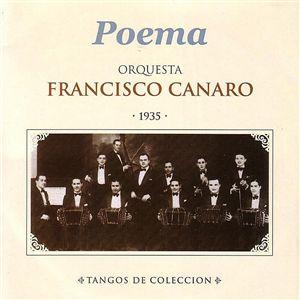
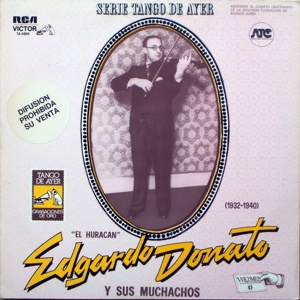
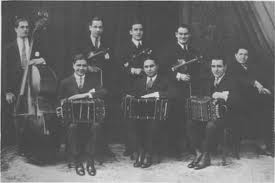

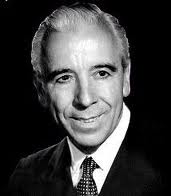
 Here is a collection of Osvaldo Fresedo tandas. My favorite tandas are highlighted.
Here is a collection of Osvaldo Fresedo tandas. My favorite tandas are highlighted.